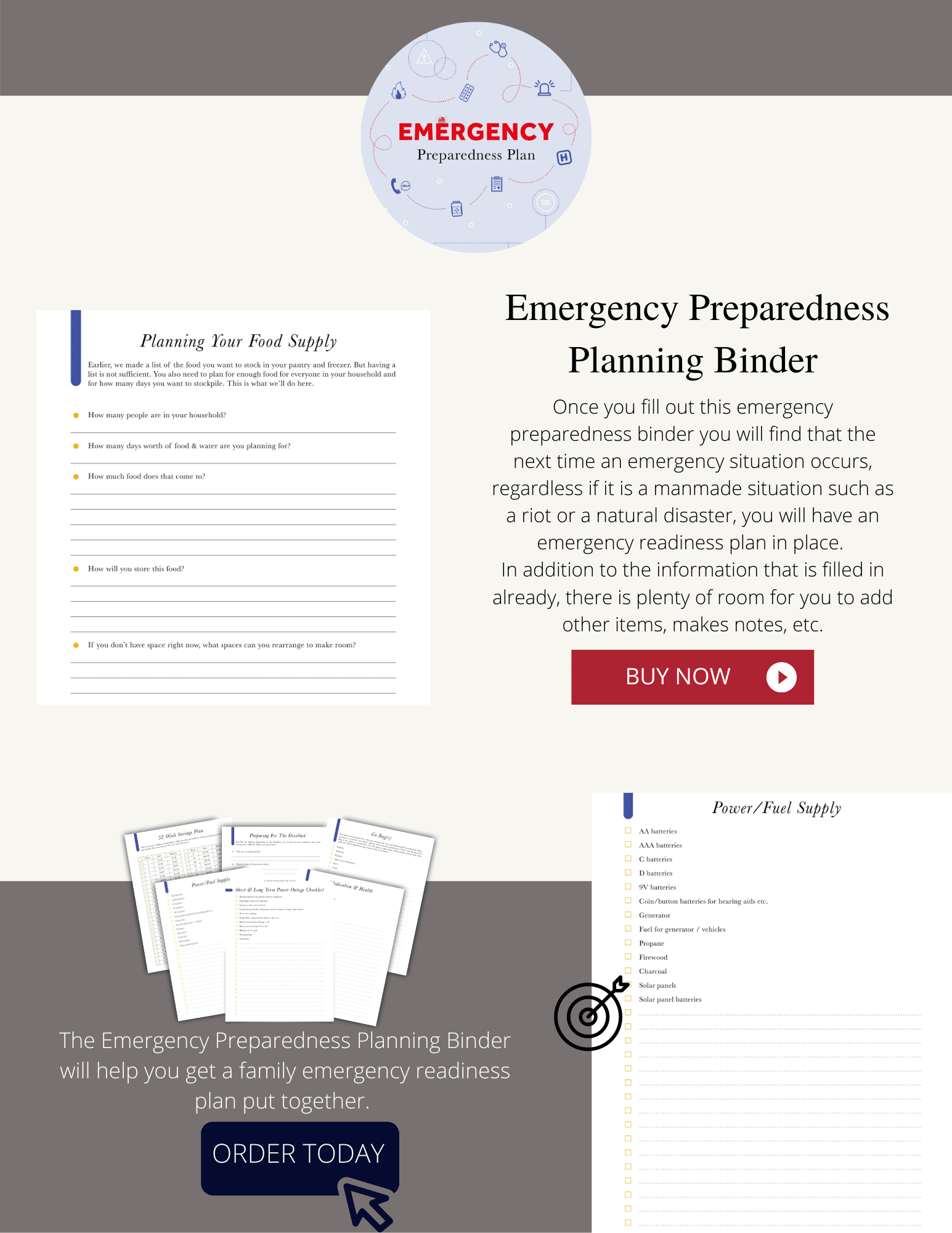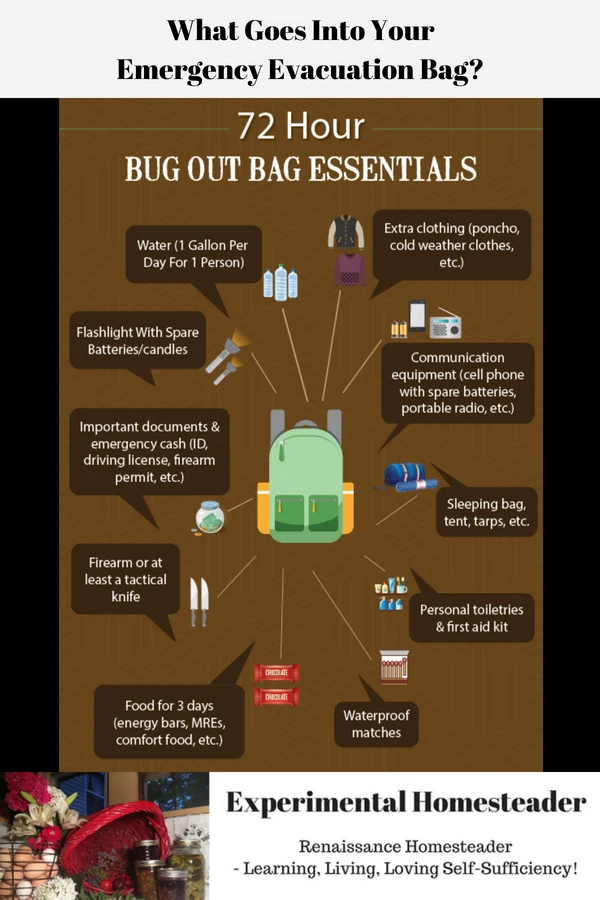Have you ever wondered what goes into an emergency evacuation bag or as it is sometimes called, a bug out bag?
In a nutshell, you need to include things that are essential for survival in an emergency situation over a three day period.
There are some essentials like food, water, a fire source, a first aid kit, a means of protection and a shelter that you simply can't live without.
This is why it is so important to be prepared for emergencies and know what to do when they happen.
What Is A Bug Out Bag?
If you are new to survivalist training, you might not know what a bug out bag is.
A bug out bag or as it is sometimes called, an evacuation bag, is just a bag filled with emergency supplies that you can grab and go on your way in the event of a disaster.
The reason a bug out bag is necessary is because it is important to think about all of the possible emergencies that might happen in your area and be prepared to deal with them.
For example, if you live in an area prone to hurricanes, you might want to include water purification tablets and a medical kit.
If you live in an area prone to wildfires, you will want to include food and water for at least three days.
If there is a natural disaster or man-made emergency that takes place, your bug out bag will come in handy.
It needs to contain items that will help sustain you for 3-5 days if necessary.
What To Put In An Emergency Evacuation Bag
To make an evacuation bag, simply put your emergency supplies, medicines and clothing into a heavy duty backpack or sturdy nylon bag.
Supplies you will need include food that is lightweight.
Freeze-dried foods or MREs work best.
Make sure you pack enough food so that everyone with you has food for a minimum of three days.
An emergency evacuation bag can be a lifesaver in case of an emergency, but remember it has to be lightweight and sturdy.
Don't Pack Water, Instead Pack Water Purification Supplies
Water is a something you are going to need.
Plan to have three days worth of water for everyone.
It makes more sense to take along something to collect water in and purify it instead of trying to pack bottled water, especially if you have to escape on foot.
Pack water purifying tablets or put a purifying water filter in your bug out bag.
Bleach can do in a pinch, but it is harder to pack.
Remember To Pack A Basic Cooking Set
In any emergency, being prepared is as important as being safe.
This applies to cooking as well as anything else.
In the event of a natural disaster, there may be no power or access to running water or food.
A basic cooking set can help you make sure you don’t go hungry and provide for your family in times of need.
To cook food, you need a basic camping cookware set, such as lightweight pots that can be used over campfires or on a portable camp stove.
A basic cooking set should include items like a pot with lids, a colander, fork and spoon and bowls and plates for serving food.
You will also need scissors for cutting vegetables or meat into smaller pieces or opening packages of meat or cheese, measuring cups and spoons for accurate measurements of ingredients like salt and baking soda and dish soap for washing dishes after use.
Take Clean Clothes With You
Pack enough clothes for at least two days.
The clothes that you are wearing when you bug out will count as your third set.
Make sure you pack long pants, long sleeved shirts and other clothing that will keep you warm.
You want to do this even if it is summer.
Long pants and long sleeved shirts will protect your skin from pests and will keep you warm if the temperatures dip at night.
You also want to pack extra socks and underwear.
Take sturdy hiking boots along, too.
Rain gear like a poncho can be used as shelter in a pinch.
Bring a hat along to keep the rain and the sun off your head.
Take sunglasses to protect your eyes in case you are out in the sun for long periods.
A bandana - or several bandanas - should be packed because they have a multitude of uses.
Don't Forget Shelter Materials
Shelter materials should also go in your backpack.
Take a tent or a tarp along with cording in the event you need to tie something to trees.
Carry a sleeping bag or a sleeping pad along to protect you from having to sleep directly on the ground.
Make sure there are enough emergency blankets for everyone.
Other Essential Emergency Evacuation Bag Items
Personal hygiene materials need to go in your bug out bag and don't forget your first aid kit.
Include all medicine anyone in your family is on.
Fire starters are necessary as are waterproof matches.
Take a flashlight that uses solar power rather than batteries.
You also want fishing gear, a knife and a multitool.
An emergency radio and a way to charge your cell phone using solar power should be included in your bug out bag.
Have sturdy gloves and a small axe that can be used to make a clearing or to get debris out of your way.
You also want to have a folding shovel and duct tape.
Bring your important papers and pack card games, coloring books or some type of entertainment for the kids.
Finally, make sure that you bring a weapon such as a gun in order to protect yourself and your family.
Final Thoughts
By having your emergency evacuation bag packed and ready to go, you save time plus eliminate the possibility that you are going to forget something important.
If possible keep your emergency evacuation bag within reach at all times because you never know when you might have to bug out.
<div
data-shortcode="mv_create"
data-attributes='{DQUOTEkeyDQUOTE:DQUOTE40DQUOTE,DQUOTElayoutDQUOTE:DQUOTEcirclesDQUOTE,DQUOTEthumbnailDQUOTE:DQUOTEhttps://experimentalhomesteader.com/wp-content/uploads/2019/02/evacuationbag-e1526428610744.pngDQUOTE,DQUOTEtitleDQUOTE:DQUOTE








